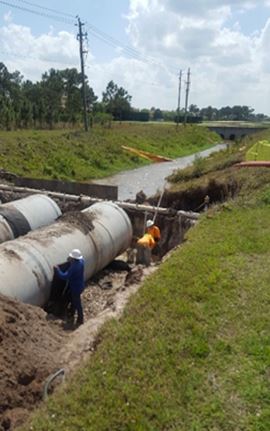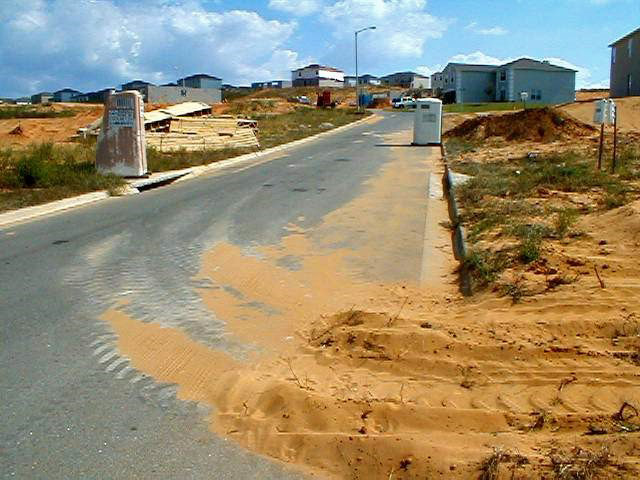Construction Activities
If you see something wrong or that you think might be wrong at a construction site you might ask yourself- What can I do? Well, you can do something, and your actions can make a difference! Take pictures of what you think might be wrong (do not trespass!), then call or email your pictures and concerns to your local government. Ask questions, ask if what you saw is okay. Be polite.
You can also become a Certified Stormwater Volunteer to learn what is and is not allowed. Our first class is free; then you can decide if you want to become a member of our team! Our volunteers are trained specifically in illicit discharge detection and elimination (IDDE). You will receive training in the Clean Water Act and the NPDES program, followed by specific training in Construction, Industrial, and Municipal stormwater permits – and what actions, or lack of actions, can result in illicit discharges.
Citizen Report: Willoughby Street, Stuart FL
 A resident driving past a construction site observed the construction of a road over a large drainage canal. Closer observation found a turbidity barrier was totally under water. The exposed, disturbed earth was able to enter that canal through erosion by wind and by stormwater.
A resident driving past a construction site observed the construction of a road over a large drainage canal. Closer observation found a turbidity barrier was totally under water. The exposed, disturbed earth was able to enter that canal through erosion by wind and by stormwater.
(Turbidity is cloudy or hazy water, and is a key measurement of water quality. Water can contain suspended solid matter; the larger, heavier particles will sink to the bottom, but the lighter particulates settle slowly or not at all, and that causes water to be turbid.)
This resident immediately called the county engineering department to report the observation. He also wrote a report and included pictures.
A representative of the county called the resident the next day to discuss his observations. Sadly, the county took no action, so the resident then contacted the South Florida Water Management District and the Florida Department of Environmental Protection. Both organizations failed to have the turbidity barrier fixed.
Frustrated by the lack of action to protect his community’s water, the resident then requested a copy of the construction developer’s Stormwater Pollution Prevention Plan (SWPPP), which was his right under the Clean Water Act. He found this legal and required document had not been signed and did not contain signatures of the subcontractor in charge of the turbidity barrier. Due to this resident’s actions, the construction operator corrected the SWPPP, improved the perimeter fence, installed pollution controls at the outlet to the canal, and posted a public notice. With the project now in compliance, the water was once again protected.
Other issues to look for at construction sites are represented in the following picture. This shows a number of permit violations at just one site! There is no silt fence barrier which is a temporary sediment control device. Dirt from the site has been tracked out into the public street, and there has obviously been little to no effort to clean that up regularly. Not only is this a stormwater permit violation, but it is also a serious safety issue. The curb inlets need straw bales or wattles to prevent the dirt from directly entering into the waterbody that they drain to. Finally, there are much better places to position port-a-potties than in the street and directly above a curb inlet.




